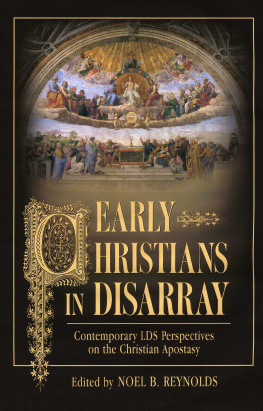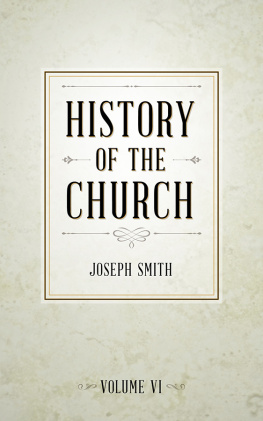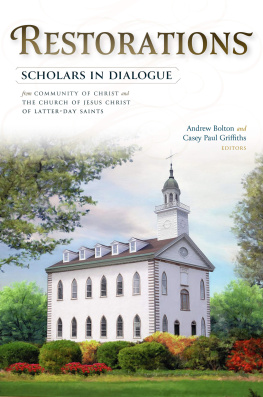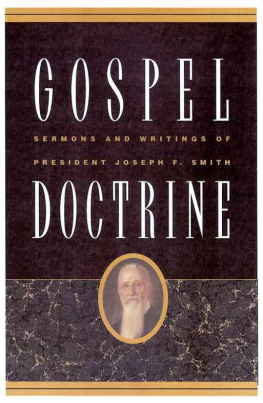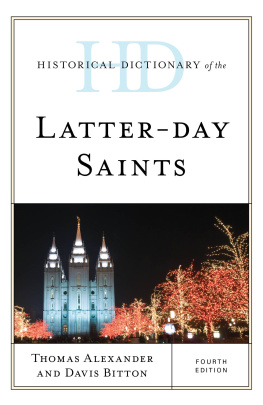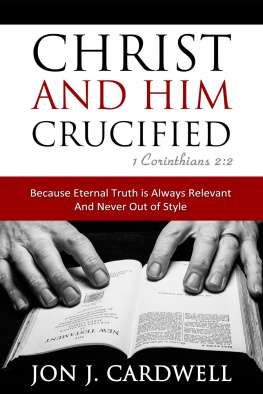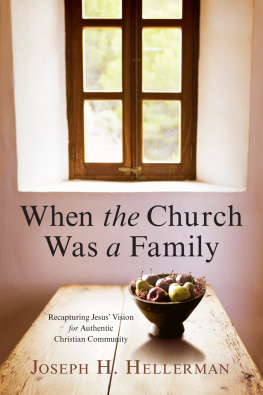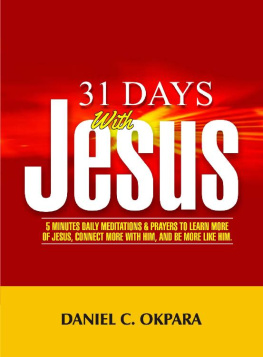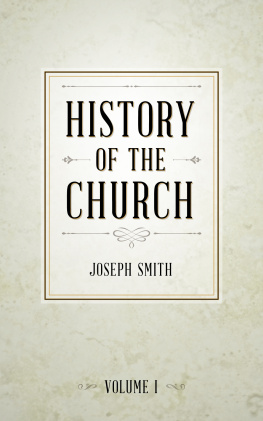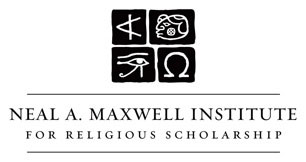Early Christians in Disarray: Contemporary LDS Perspectives on the Christian Apostasy
Noel B. Reynolds
2005 Foundation for Ancient Research and Mormon Studies Brigham Young University.
Foundation for Ancient Research and Mormon StudiesBrigham Young UniversityAll rights reservedPrinted in the United States of America
Acknowledgments
Noel B. Reynolds
As every author and editor knows, books have their own stories. This book began with an informal faculty reading group which began meeting on a biweekly basis four years ago to read and reread the texts that have survived from the earliest centuries of Christian writing and teaching. I was both surprised and thrilled to see how many of my colleagues at Brigham Young University shared my feeling that a rethinking of early Christianity from the Latter-day Saint perspective was overdue, and that by reading through those texts together, we might be able to see important influences and developments that would help us understand better what actually happened in those first centuries to produce a Christian tradition that was so different from the original church and teachings established by Jesus.
After two years, we knew we had both information and insights that we wanted to share with the larger LDS community, and we organized a private conference to present papers and to get critical feedback from a wider range of our colleagues at BYU. Encouraged by the enthusiastic reception of that first effort, we undertook to produce the separately authored chapters that comprise this volume. I wish to express my deep appreciation to my fellow faculty members at Brigham Young University who participated in this process and contributed their thinking and their encouragement in the development of the papers that eventually found their way into the book.
Good critics are essential to progress in academic research and thinking, and the present volume has been significantly improved as it has been filtered and refiltered through a series of critical reviews. I am most grateful to a number of colleagues and anonymous peer reviewers who helped us revise and strengthen our presentations and arguments. They have also helped me to see why some chapters I had thought earlier to include would not fit that well with the present collection.
Even after all that, this book would not be completed today had it not been for the strong support and editorial management that Alison Coutts and her editorial and production staff brought to bear on it. I am particularly indebted to Alison, who compensated repeatedly for my inattention due to other, more urgent projects. Don Brugger helped in the early stages as staff editor. Jacob Rawlins did the typesetting. Shirley Ricks and Geniel Empey assisted in copyediting. Paula Hicken managed the sourcechecking and proofreading, assisted by Linda Sheffield, Sandra Thorne, David Solorzano, and Jennifer Messick. As director of research for FARMS, Jerry Bradford managed the peer-review process. To all of these I express my sincere thanks.
Noel B. Reynolds
Provo, Utah
May 2005
About the Authors
Richard E. Bennett (PhD, Wayne State University) is Professor of Church History and Doctrine at Brigham Young University.
Adam Bentley is an undergraduate at Brigham Young University studying philosophy.
Barry R. Bickmore (PhD, Virginia Polytechnic Institute) is Assistant Professor, Department of Geology, Brigham Young University.
Ryan Christensen is a PhD candidate in philosophy at Stanford University.
Eric R. Dursteler (PhD, Brown University) is Assistant Professor of History at Brigham Young University.
James E. Faulconer (PhD, Pennsylvania State University) is Professor of Philosophy at Brigham Young University.
John Gee (PhD, Yale University) is William (Bill) Gay Associate Research Professor of Egyptology at the Institute for the Study and Preservation of Ancient Religious Texts at Brigham Young University.
Daniel W. Graham (PhD, University of Texas) is A. O. Smoot Professor of Philosophy at Brigham Young University.
David L. Paulsen (PhD, University of Michigan) is Professor of Philosophy at Brigham Young University.
Noel B. Reynolds (PhD, Harvard University) is Executive Director of the Institute for the Study and Preservation of Ancient Religious Texts, Director of the Foundation for Ancient Research and Mormon Studies, and Professor of Political Science at Brigham Young University.
Amber J. Seidel is an MA candidate in Family Sociology at Eastern Michigan University.
James L. Siebach (PhD, University of Texas) is Assistant Professor of Philosophy at Brigham Young University.
John W. Welch (JD, Duke University) is the Robert K. Thomas Professor of Law at the J. Reuben Clark Law School, Brigham Young University, and Editor in Chief of BYU Studies.
Introduction: What Went Wrong for the Early Christians?
Noel B. Reynolds
When Joseph Smith emerged from the grove in 1820, he had learned first hand from Jesus Christ himself that the Christian churches of his day were all wrong and that he was forbidden to join any of them. "Their creeds were an abomination in his sight," their "professors were all corrupt," and they were teaching "for doctrines the commandments of men, having a form of godliness," but denying "the power thereof" (Joseph SmithHistory 1:19).
From that first vision onward, Joseph Smith, and the Latter-day Saints who believed his testimony, understood clearly that the "restoration of all things" was made necessary by the loss of the church established by Jesus Christ during his life upon the earth. These first generation Latter-day Saints were impressed by the rampant confusion and contradictions in the Christian world of their day and tended to see that confusion as sufficient evidence of an apostasy. Israel was scattered and lost. The restoration was necessary to gather Israel and to re-establish the true teachings and church of Jesus Christ in the world.
By the end of the nineteenth century, LDS scholars and leaders had entered a new phase in their understanding of the Christian apostasy by drawing on the findings of modern historians in an attempt to expand their understanding. Protestant historians, who focused on the failings of the Catholic tradition, provided seemingly endless evidences of apostasy in Christian history, justifying the Protestant Reformation in the process. They pointed to the obvious wickedness of late medieval popes and priests. They pointed to the sales of indulgences, a tactic to raise money for the church by selling forgiveness of sins in this world to prevent punishment in the next. Guided by these eighteenth and nineteenth century Protestant historians, LDS writers pushed the apostasy farther back in time by focusing on the sins of medieval European Christianity.
Over the last century there has been an outpouring of newly discovered manuscripts, written during the first Christian centuries, that enables us to get a much clearer picture of what the Christian experience was like in those early times. And as our knowledge of these times grows, the apostasy is again pushed back further, even into the first century. Hugh Nibley was the first LDS author to enter this third phase. Relying on the New Testament, the writings of the apostolic fathers, and the pre-1960 secondary literature that deals with this period, Nibley produced a list of forty "variations on a theme," that theme being that the primitive church would not last long or had already passed away. In this paper prominently published in

